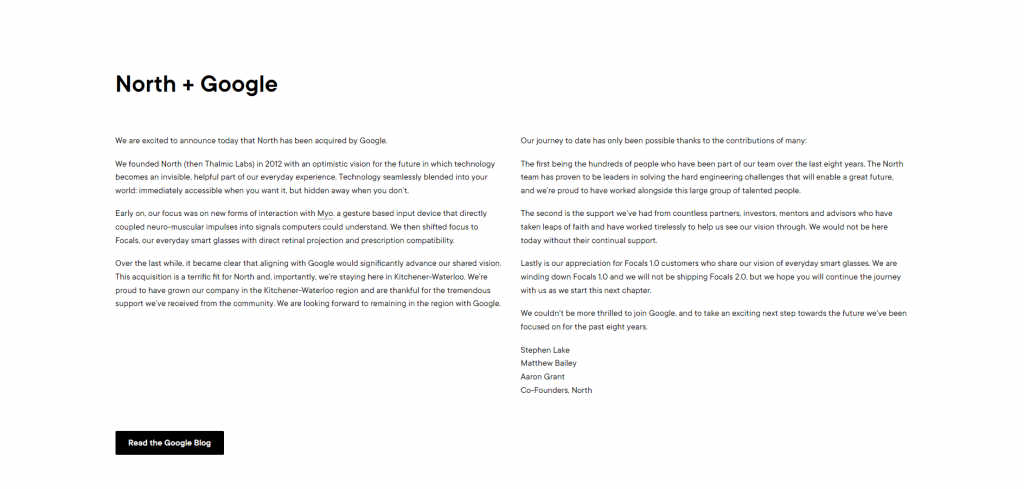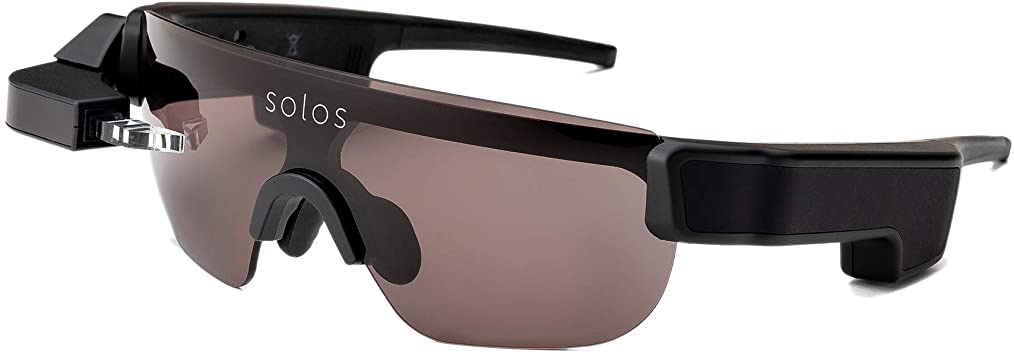If you grew up as a 90s kid, you undoubtably saw Rodriguez’ Movie “Spy Kids”, an absolute favourite of mine as a kid with an expansive interest in cool gadget tech. But now, in 2020, is that becoming less of a dream and more of a reality?
Google Glass really was a big hitter in the media, everyone was going on about it. But it suddenly died, right?
Well, not exactly and with that came a whole array of competition!
What are Smart Glasses?
Just like all those SciFi films, Smart Glasses aim to bring wireless connectivity to direct to your eyes, with awesome features like contactless control, voice control and a variety of lenses.
Imagine being able to watch YouTube whilst on the tube or read a book without anyone else knowing you’re reading. Weird, but that’s the future.
Essentially, Smart Glasses will replace the need to have your Smart Phone out, simply connect via Bluetooth and do everything you need to do without touching anything.
What is the difference between VR and AR?
With Smart Glasses approaching the future at an accelerated rate, you know for a fact Marketing teams are going to be throwing around a lot of words to sell you lots of features, for example, AR, VR, MR & XR. Confusing, right?
For the most part, we’ll start with AR and VR and maybe down the line MR will become the norm (Much like Blu-Ray players also playing DVDs).
Augmented Reality (AR)
This essentially adds a layer of interactivity with your screen and the real world, in the Smart Glasses case, this will be the image projected onto your retina.
Think playing Pokemon Go or Harry Potter Wizards Unite, except, it’s seen only by yourself and the Pokémon interact with your surroundings.
Another alternative to mention would be Snapchat and their AR project Lens Studio.
Virtual Reality (VR)
This element typically removes the outside world, you’ll be thrown into a virtual road where you can interact with digital objects and environments.
Various devices that you’ll have seen using VR are HTC Vive, Google Cardboard and Oculus Rift. I’m sure if you’re into it, you’ll also have seen a very popular adult entertainment video supplier offer VR options too. But we’ll keep that quiet.
Mixed Reality (MR)
Likely to be the future of VR and AR, this technology combines VR and AR, allowing you to see both your real world with Augmented Reality elements in that world.
Microsoft has been working on this with the HoloLens, which allows people to have a virtual holograms in a fixed 3D position infront of the user. Microsoft calls it instinctual interaction, I call it genius and can’t wait to see Mixed Reality in all Smart Glasses.
Definitely check out this old demo of Mixed Reality:
How do Smart Glasses Work?
There’s a lot of complexity to Smart Glasses and it changes from each vendor, whether you’re looking at the Google Glass, Intel Vaunt or even Bose’s own brand.
Basically, the technology goes like so:
- Your Smart Glasses with project an image to a holographic mirror surface
- This surface will then bounce the image directly into your eyes. This means you’re not constantly having it block your vision, it’s simply floating infront of you
Due to the schematics of this, you can stop looking at the ‘Smart Screen’ by simply looking forward and not down slightly.
The original Google Glass was slightly different, it used a prism to redirect the image into your eye via a projector.
Given it’s been 7 years since the original Google Glass, there’s a huge emphasis on touch free control, this means lots of voice control and hand gestures. Totally not weird to look at!
What can Smart Glasses do?
The main purpose of Smart Glasses is to provide the accessibility of viewing certain elements of your phone and other IoT (Internet of Things) devices without needing to do anything except wave your hands in the air, look in a certain direction or use your voice.
This means your Smart Glasses are great for taking authentic looking photos (Google Glass), watching video clips from Facebook and even viewing your instagram feed.
Basically, if it can be viewed or controlled by your Smart Phone, the idea is to have it controlled via your glasses. Neat, right?
Can you watch videos on smart glasses?
Most Smart Glasses allow you to watch videos on screen, given the technology is based on a projector reflecting the image into your retina I can definitely see it having a ‘broadcast’ or ‘screen share’ feature.
Whilst this early on, it’s definitely worth noting that there’s a chance legality will come into play in the future. For example, watching videos whilst driving will likely become illegal. Whilst I don’t have any evidence for this, I do feel given the use of phones whilst driving being illegal that this will.
Are Smart Glasses going to replace Smart Phones?
There’s no absolute way of predicting this, it’s been 7 years since the release of Google Glass and nothing has happened. However, there are rumours from a company called “The Information” that stated they had learned the following:
Apple is aiming to release an augmented-reality headset in 2022 and a sleeker pair of AR Glasses by 2023.
Apple (Via The Information)
In the grand scheme of things, this projection does appear to be on the way there, More Smart Glasses brands are developing every year and we’re getting closer to 2022. I can definitely see a big technology boom for this branding.
I would wager Smart Glasses are likely to be introduced in workplace environments before they are popular in the general public.
So, are Apple working on Smart Glasses?
There would be no surprise to Apple branching out to Smart Glasses And/Or an AR (Augmented Reality) Headset. To break it down, Apple is rumoured to have a ‘secret’ unit working on AR and VR technology (No doubt with Siri involved).
An individual named Jon Prosser leaked that Apple is looking to call their Smart Glasses “Apple Glass”, although, that does seem very close to the original Google Glass.
Whilst I can’t find any information on this which has any real supporting information to it, Bloomberg has said that Apple Glasses will run on an operation system following the same naming convention to their others which would be “rOS”, or Reality Operating System.
Who are the main Smart Glasses companies to look out for?
The unfortunate news is that Google is looking to eat up its competition, an example of this would be Focals by North. On Jun 30, 2020, Google’s Rick Osterlog announce that they had acquired North in aims to embed them into the Google Glass.

So, who do you turn to when Google is on the prowel? Unfortunately it’s impossible to tell. I think the best route would be to look into companies that are already established. Unfortunately, there’s not too much of an option out there.
Vuzix Blade

Whilst a super expensive pair of Smart Glasses, it seems to be the top dog as of writing this post. It uses a 480p square display which takes up around 19 degrees of your right eyes Field of View and the Square can be moved wherever you need.
The camera is surprisingly good for such a small size, it uses an 8MP camera which shoots at 720p 30FPS or 1080p 24FPS.
If you’ve read my blog posts before, you know I’m a fan of Amazon Alexa which is great as the Blade Smart Glasses allow you to install Amazon Alexa into the companion App.
The actual companion app (Also known as the Vuzix App) comes with a few additional apps to help provide further support. Although, there isn’t a lot to choose from. You can select from the default ones you would expect; Netflix, Zoom, Amazon Alexa and even DJI Drones.
What we think makes them great is their inability to scream “I love tech no one else does”, the glasses look fairly normal and I can’t shame them for that. In tis day and age it doesn’t hurt to normalise the aesthetic of expensive gear.
These glasses come at around $499 on Amazon, and the reviews aren’t great for it, averaging at 3 stars.
Cons of the Vuzix Blade
- Camera doesn’t perform well, it seems small motion causes a lot of blurring.
- Battery life when watching multi-media is fairly low, enough for one movie (90 Minutes)
- The internet is slow, regardless of WiFi or Tethering
- Some videos don’t run in the internet browser app
- GPS takes up to 10 minutes to find certain users
- Motion Sickness is fairly common
- Some reports of 2nd hand devices being sold.
Solos Smart Glasses
These are slightly different Smart Glasses to their competition, they’re built around providing a sports analysis, specifically bike riding. The major point of these glasses is to key view metrics of your ride without causing you any potential danger (Looking down for example).
One of the greatest parts of Solos is that it runs a Ghost program, where you can view your previous train times and get real-time feedback straight infront of you.
You’ll recieve audio and visual cues and well as an on-screen navigation guide. Honestly, there’s so many features and metrics that you can possibly have in vision that it makes these worth the money for any bike ride enthusiast.
Cons of the Solos Smart Glasses
- There’s really not a lot in terms of cons I can see or find for these glasses. The worst review on Amazon is a 3-star review which simply says “Ok”.
- The thing you should be most worried about is the early day and age of Smart Glasses and reliability.


